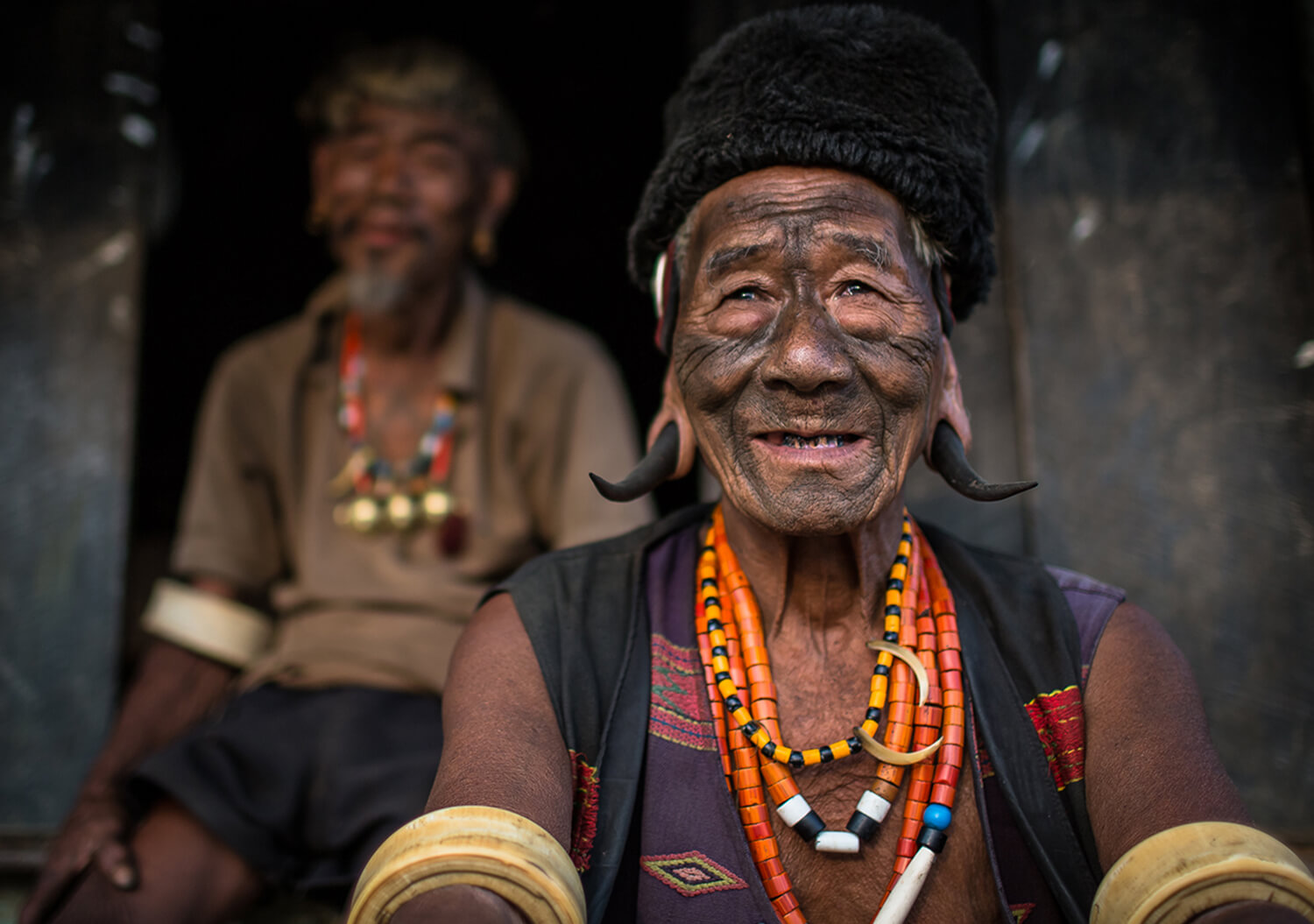Donyi-Poloism (Sun-Moon) is the philosophy of maintaining the balance of nature and harmony among tribals. Most of the tribes here worship nature, and other deities. With time, Buddhism emerged as one of the prominent school of belief amongst the people.
There seems to be no source of written records of Arunachal Pradesh’s culture and most of the information can be found through oral literature only. An enchanting abode of some of the world’s most unique communities, an abundance of rich biodiversity and a world set apart in time, Arunachal Pradesh is truly a paradise that will forever remain a blissful place, unspoiled by the passage of time.
Arunachal Pradesh is a land of rich cultural heritage and varied folk-art tradition.
The folklore is vital in passing on the values, beliefs and moral teachings of a society. Since ages, it has been an eternal part of tribal culture. The folklore, culture, heritage and agriculture define the tribal society. The folk and tribal arts of Arunachal Pradesh are simple, ethnic and colourful. It speaks volumes of state’s rich cultural heritage.
The tribes constitute a rich, unique, varied and critical element of Arunachalee tradition. The folk and tribal arts of Arunachal Pradesh are ethnic, simple, colourful and ISSN 2321–9548 Tame Ramya 27 International Journal of Research in Sociology and Social Anthropology, 2013, 1(2): 26-30 vibrant enough to speak volumes about the state’s rich cultural heritage. Tribal life is an epitome of absurdity. Even though, they are living in an enriched environment with full of colours and music, their personal life is an untold sufferings arising out of alienation, deprivation and enslavement.
Arunachal Pradesh is predominantly a tribal state and happy home of major local scheduled tribes. About two third of its population belongs to Scheduled Tribe (64.22%0 from 26 major tribes and more than 100 sub-tribes. The different tribes have their own dialects. The local people inhabiting in Arunachal Pradesh are :
• The Monpas, Mijis, Akas, Khowas, Sherdukepens and Bangnis in Tawang, West Kameng and East Kameng districts.
• The Adis & Galos which include a large number of sub-tribal groups, Membas and Khambas in West, East and Siang districts.
• The Mishmis of three different sects, Khamptis and Singhphos in Lohit, Dibang Valley and Lower Dibang Valley districts.
• The Noctes, Wanchos and Tangsas in Tirap and Changlang districts.
• The Apatanis, Nyishis, Tagins and Hills Miris in Lower and Upper Subansiri districts.
The broken Hindi and Assamese serve as linguafranca. English is the fficial language of the state.
On the basis of socio-religious affinities, the people inhabiting in the state re divided into three broad cultural groups. The Monpas and Sheredukpens of Tawang and West Kameng districts follow the Lamaistic tradition of Mahayana. The Khamptis and Singhpos inhibiting in Lohit and Changlang districts practice Hinayana sect of Buddhism. The secong group of people are the Adis, Galos, Akas, Apatanis, Nyishis, Mishmis, Mijis, Tangsas, etc who worship the Sun and Moon God, called ‘Donyi-Polo’ and ‘Abo-Tani’. The third group comprises of Noctes and Wanchos of Tirap district who practice the elementary form of Vaishnavism.
The people of Arunachal Pradesh have a tradition of artistic craftsmanship and sense of asthetics manifested through a variety of crafts, such as weaving, painting, pottery, smithy work, basket making, wood carving and cane and bamboo caps and furniture. Festivals are an essential part of the socio cultural life of the people which are connected with agriculture and celebrated with ritualistic gaiety either to thank God for the providence or to pray for a bumper harvest.
The important festivals are Mopin of Galos, Solung of Adis, Lossar of Monpas and Sherdukpens, Dree of Apatanis, Si-donyi of Tagins, Nyokum of Nyishis, Reh of Idu-Mishmis and Shangken of Khamptis and Singphos. The traditional dance like Ponung of Adis and other dance of various tribal communities have retained the folk character and are performed by all irrespective of gender and age. So far as the social structure of the community is concerned, the tribes of Arunachal Pradesh have organized system of functioning in their villages. The traditional village Panchayats is such as Kebang among Adis and Galos, Long among the Sherdukpens, Mel among the Akas, Gingdung and Nele of Nyishis, Builang among the Apatanis and so on.
Most of the tribes now a days extensively practice wet rice cultivation and have a considerable agricultural economy. Apatanis are also famous for their paddy-cum-pisciculture. They are specialized in harvesting two crops of fish along with each crop of paddy.

